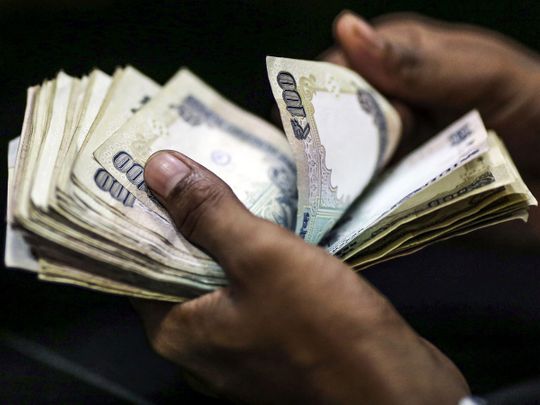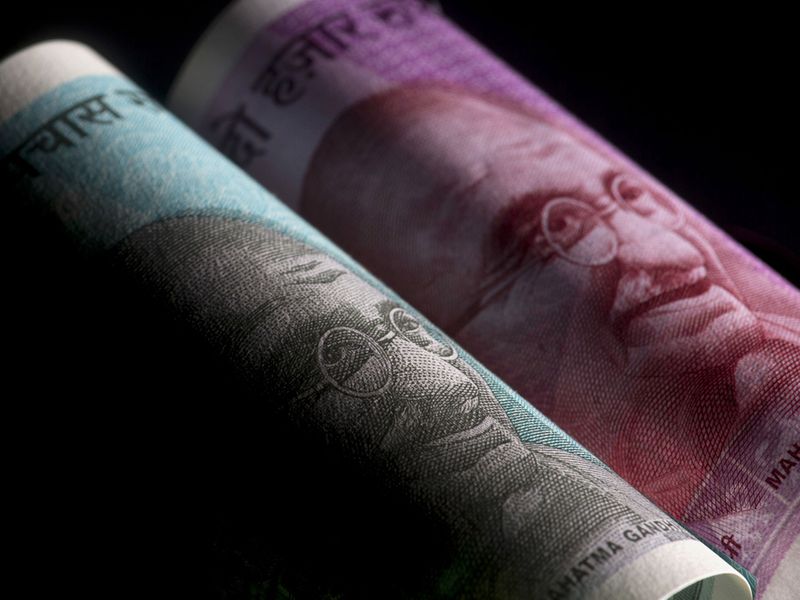
Dubai: Although the Indian rupee has been rebounding from remittance-beneficial rates against the US dollar and the UAE dirham these past days, Dubai-based forex analysts flag currency gains to be limited, giving hope to those looking to remit money back home this week.
The value of the currency appreciated by 14 paise on Monday after last closing at Rs20.69. Check the latest forex rates here. The Indian rupee has been under pressure exerted by high oil prices, and the resultant inflationary pressures in the country.
On March 31, last trading session of the fiscal year, the rupee advanced by 16 paise to close at 75.74 against the US dollar. The Indian rupee closed the 2021-2022 fiscal year with total losses of 3.6 per cent or 264 paise against the greenback due to a stronger dollar and surging crude oil prices, Dubai-based analysts noted.
Oil gains keep rupee under pressure
The Indian forex market was closed on Friday for the annual account closing of banks. Global oil benchmark Brent crude futures, which are indicative of near-term prices, rose marginally to $104.53 per barrel. The dollar index, which gauges the greenback’s strength against a basket of six currencies, stayed relatively higher at 98.57.
The rupee inched up by 3 paise to 75.71 against the US dollar early on April 4, starting the first day of the financial year 2022-23 on a muted note, amid a firm trend in the local stock market. At the interbank foreign exchange, the rupee opened lower at 75.77 against $1, then touched an early high of 75.71, up 3 paise over its close.
Weakness in the rupee's value against the US dollar will be automatically reflected in its exchange rate with the UAE dirham as the UAE currency is pegged to the dollar.

Inflationary concerns to stay this week
Inflationary concerns over elevated commodity prices are expected to maintain pressure on the Indian rupee during the upcoming week. Accordingly, high crude oil as well as other raw material prices are expected to unleash a inflationary wave.
This trend, said senior analysts, will dent growth prospects along with leading to an eventual rise in interest rates. While growth recovery in India beginning to exhibit signs of durable recovery, higher commodity prices led by escalated geopolitical tensions and the hawkish pivot in stance by key global central banks will likely have a bearing on the upcoming Monetary Policy Committee (MPC) meeting, analysts at key US lender Morgan Stanley flagged.
"We expect inflation to remain above the upper threshold of the RBI's inflation target for the next few months and to decelerate to around 5.5 per cent by the fourth quarter," Morgan Stanley added. "As such, we expect the RBI to adjust the 'reverse repo' rate upwards in the April policy and follow that up with a 'repo rate' hike in the June policy, with a cumulative rise of 125 basis point percentage hike in fiscal year 2023," the brokerage projected.
The interest rate that the RBI pays commercial banks when they park their excess cash with the central bank is called the 'reverse repo' rate.
How does it affect the Indian rupee value? To put it simply, an increase in repo rate, leads to an increase in interest rate, which makes it more attractive for foreign investors to invest in the country. And the reverse is also true.
Generally, higher interest rates increase the value of a country's currency. Higher interest rates tend to attract foreign investment, increasing the demand for and value of the home country's currency.
So what happens when funds move into India due to better interest rates? Foreign investments come in US dollars, resulting in an abundance of US dollars in the market, which in turn will strengthen the Indian rupee. Same way when funds move out, the rupee will get weaker due to the scarcity of dollars in the market.
However, the recent US dollar selling by Indian tech majors will arrest any sharp downfall in rupee value against the US dollar. Consequently, the spot USD-INR rate is expected to settle in the range of 76 to 76.50 for the next week. Crude and rising US yields kept the rupee weak amid Ukraine war concerns. Moreover, rising inflation is a concern across the globe and does not see an immediate solution, which shall keep the currency weaker, the analysts cautioned.







_resources1_16a30b358e0_small.jpg)

